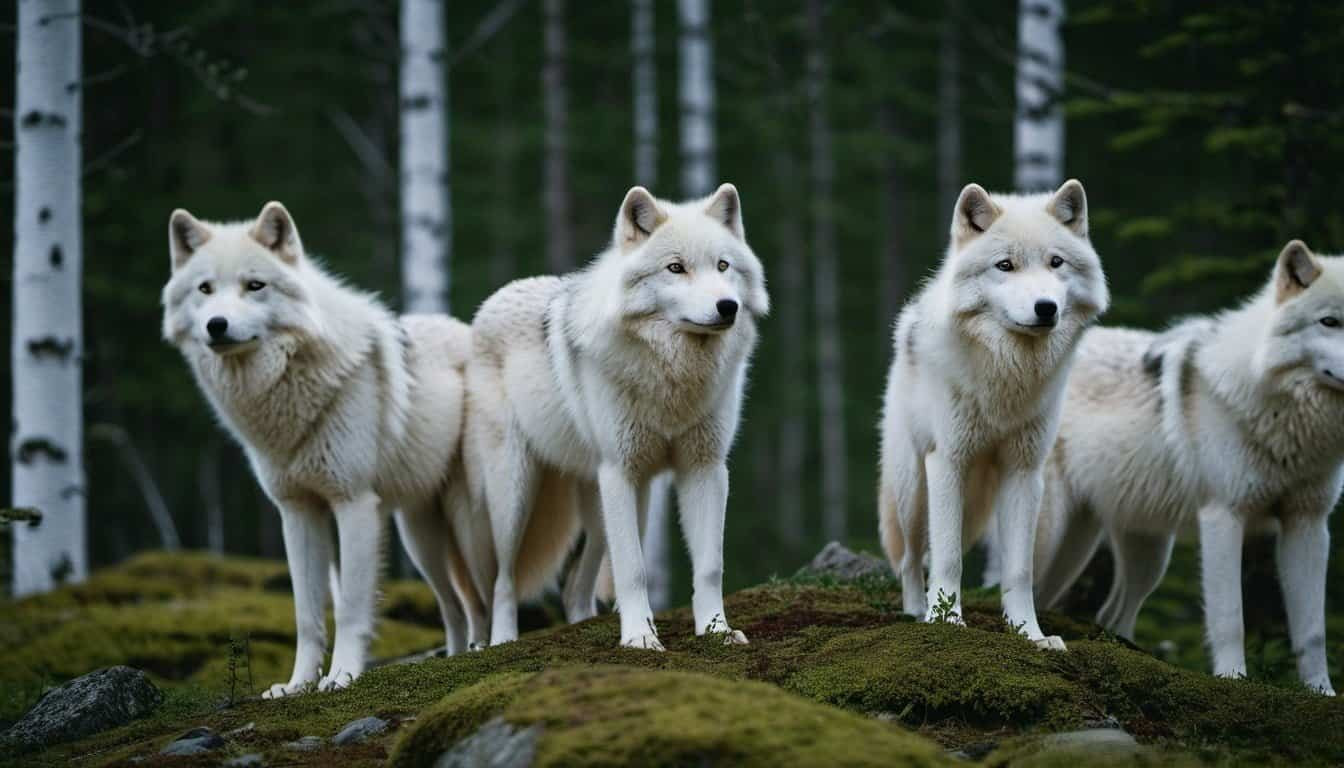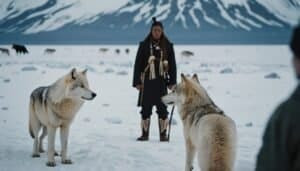Introduction
Conserving Arctic wolves is not only vital for ecological balance but also brings significant economic benefits. These majestic creatures play a crucial role in boosting local economies, supporting employment, and sustaining natural resources
Additionally, Arctic wolf conservation enhances tourism, offers educational opportunities, and provides economic support to indigenous communities. This article explores the various economic advantages of conserving Arctic wolves, from direct financial contributions to long-term sustainability and indirect benefits
Economic Contributions of Arctic Wolves
Conserving Arctic wolves offers several direct economic contributions to local communities and regions. The presence of these animals in their natural habitat stimulates various economic activities, providing multiple benefits
Local Economy Boost
Arctic wolves contribute to the local economy by attracting tourists and researchers. Wildlife enthusiasts and photographers often visit regions where Arctic wolves are found, spending money on local services such as lodging, food, and guided tours
This influx of visitors provides a steady revenue stream for local businesses, helping to support and sustain the community economically. Additionally, the presence of Arctic wolves can lead to increased funding for conservation projects and scientific research, further boosting the local economy
Employment Opportunities
The conservation of Arctic wolves also creates employment opportunities. Jobs in wildlife management, research, and eco-tourism become available, providing work for local residents. This employment is crucial in remote areas where job opportunities might be limited
Conservation programs often require skilled workers to monitor wolf populations, track their movements, and ensure their habitats are protected. These jobs not only offer financial stability but also foster a sense of community involvement and pride in preserving the local wildlife
Support for Local Businesses
Local businesses benefit significantly from Arctic wolf conservation efforts. Tour operators, hotels, restaurants, and shops all experience increased patronage from visitors interested in wildlife
Conservation projects often require supplies and services that local businesses can provide, creating a positive feedback loop that strengthens the local economy. Moreover, the publicity generated by successful conservation efforts can attract even more visitors and potential investors to the area, further supporting economic growth
Role in Ecosystem Balance
Arctic wolves play a crucial role in maintaining the balance of their ecosystems. By regulating prey populations and contributing to biodiversity, these predators ensure the health and sustainability of their habitats, which has direct and indirect economic benefits
Biodiversity Maintenance
Arctic wolves help maintain biodiversity by controlling the populations of their prey, such as caribou and Arctic hares. This predation keeps the prey populations in check, preventing overgrazing and allowing plant species to thrive
A healthy plant population supports a diverse array of wildlife, creating a balanced and resilient ecosystem. Biodiversity is essential for ecosystem services, such as pollination and water purification, which have significant economic value. Maintaining this balance ensures the longevity and sustainability of natural resources that local communities rely on
Sustainability of Natural Resources
The presence of Arctic wolves ensures the sustainability of natural resources by promoting a healthy and balanced ecosystem. By keeping herbivore populations under control, Arctic wolves prevent overgrazing and the subsequent degradation of vegetation
Healthy vegetation supports soil stability, water retention, and overall ecosystem productivity. These factors are crucial for industries such as agriculture, forestry, and fishing, which depend on the sustainable use of natural resources
The conservation of Arctic wolves, therefore, indirectly supports these industries by maintaining the health of the ecosystems they rely on
Health of Prey Populations
Arctic wolves contribute to the health of prey populations by preying on the weak, sick, and old individuals. This natural selection process ensures that only the fittest individuals survive and reproduce, leading to healthier and more resilient prey populations
Healthy prey populations are less susceptible to disease outbreaks, which can have devastating effects on the ecosystem and local economies. By maintaining the health of prey populations, Arctic wolves help stabilize the food chain and ensure the sustainability of the ecosystem
Tourism and Educational Opportunities
Arctic wolves attract tourists and researchers alike, creating significant economic opportunities for regions where they are found. The presence of these wolves enhances wildlife tourism and offers unique educational experiences
Wildlife Tourism Appeal
The allure of observing Arctic wolves in their natural habitat draws wildlife enthusiasts, photographers, and nature lovers from around the world. These tourists contribute to the local economy by spending money on accommodations, guided tours, food, and souvenirs
Wildlife tourism centered around Arctic wolves can become a significant revenue source for local communities, encouraging the development of infrastructure and services to support this influx of visitors
Additionally, the presence of Arctic wolves can enhance the overall appeal of a region as a destination for eco-tourism, attracting a broader range of tourists interested in the unique Arctic environment
Educational Opportunities
Arctic wolves provide valuable educational opportunities for schools, universities, and research institutions. Students and researchers can study these animals in their natural habitat, gaining insights into their behavior, ecology, and role in the ecosystem
Educational programs and field trips focused on Arctic wolves can be organized, offering hands-on learning experiences that inspire and educate participants about wildlife conservation
These programs not only foster a deeper understanding of Arctic wolves but also generate income for local businesses that provide logistical support, such as transportation, lodging, and meals for students and researchers
Impact on Indigenous Communities
Arctic wolf conservation has profound effects on indigenous communities, providing both cultural and economic benefits. These communities often have deep-rooted connections to the land and its wildlife, making conservation efforts particularly significant
Cultural Significance
For many indigenous communities, Arctic wolves hold cultural and spiritual importance. They are often featured in traditional stories, rituals, and art, symbolizing strength, endurance, and harmony with nature
Conserving Arctic wolves helps preserve these cultural practices and values, ensuring that future generations can continue to learn from and honor their heritage. The conservation of Arctic wolves can strengthen the cultural identity of indigenous communities, fostering a sense of pride and continuity
Economic Support from Conservation Programs
Conservation programs aimed at protecting Arctic wolves can provide direct economic support to indigenous communities. These programs often involve partnerships with local communities, offering employment opportunities in wildlife management, research, and eco-tourism
Indigenous knowledge and expertise in tracking and understanding the behavior of Arctic wolves are invaluable, making community members integral to successful conservation efforts
Additionally, conservation programs can bring funding and resources to these communities, supporting infrastructure development, education, and healthcare
Long-term and Indirect Economic Benefits
Conserving Arctic wolves provides numerous long-term and indirect economic benefits, ensuring the sustainability of ecosystems and the prosperity of local communities for generations to come
Long-term Economic Benefits
The long-term economic benefits of conserving Arctic wolves are significant. Healthy wolf populations contribute to robust ecosystems, which in turn support various industries such as tourism, fishing, and agriculture
By maintaining balanced ecosystems, Arctic wolves help ensure the continued availability of natural resources that are vital for economic activities. Over time, this sustainability can lead to stable economic growth and reduced costs associated with environmental degradation and resource depletion
Furthermore, long-term conservation efforts can attract ongoing funding and investment from government and private sectors, fostering economic development in the region
Indirect Economic Benefits
Arctic wolf conservation also yields numerous indirect economic benefits. For example, by maintaining the health and balance of ecosystems, these wolves help support services such as water purification, soil stabilization, and carbon sequestration, which have broad economic implications
Healthy ecosystems reduce the need for costly human interventions, such as soil erosion control or reforestation projects, thereby saving money and resources
Additionally, the presence of Arctic wolves can boost property values and attract businesses and residents who value proximity to natural and well-conserved environments
Costs of Not Conserving Arctic Wolves
Failing to conserve Arctic wolves can lead to significant economic costs. The loss of these apex predators can result in overpopulation of prey species, leading to overgrazing and habitat degradation
This ecological imbalance can cause declines in plant and animal species, reducing biodiversity and the availability of ecosystem services. The resulting environmental damage can negatively impact industries such as agriculture, forestry, and tourism, leading to economic losses
Furthermore, the cost of restoring degraded ecosystems is often substantial, making proactive conservation efforts both economically and environmentally prudent
Conclusion
The economic benefits of conserving Arctic wolves are extensive and multifaceted, impacting local economies, ecosystems, and communities in profound ways. By supporting the local economy through tourism and employment, Arctic wolves provide direct financial benefits
Their role in maintaining ecosystem balance ensures the sustainability of natural resources and the health of various species, which has both immediate and long-term economic implications
Additionally, Arctic wolves contribute to the cultural and economic well-being of indigenous communities, preserving traditions and providing essential support through conservation programs
Tourism and educational opportunities centered around Arctic wolves attract visitors and researchers, generating income and fostering a deeper appreciation for wildlife conservation. The long-term and indirect economic benefits, such as enhanced ecosystem services and reduced restoration costs, further highlight the importance of conserving these majestic animals
Ultimately, the conservation of Arctic wolves not only preserves biodiversity and ecological health but also promotes economic stability and growth, benefiting both current and future generations










